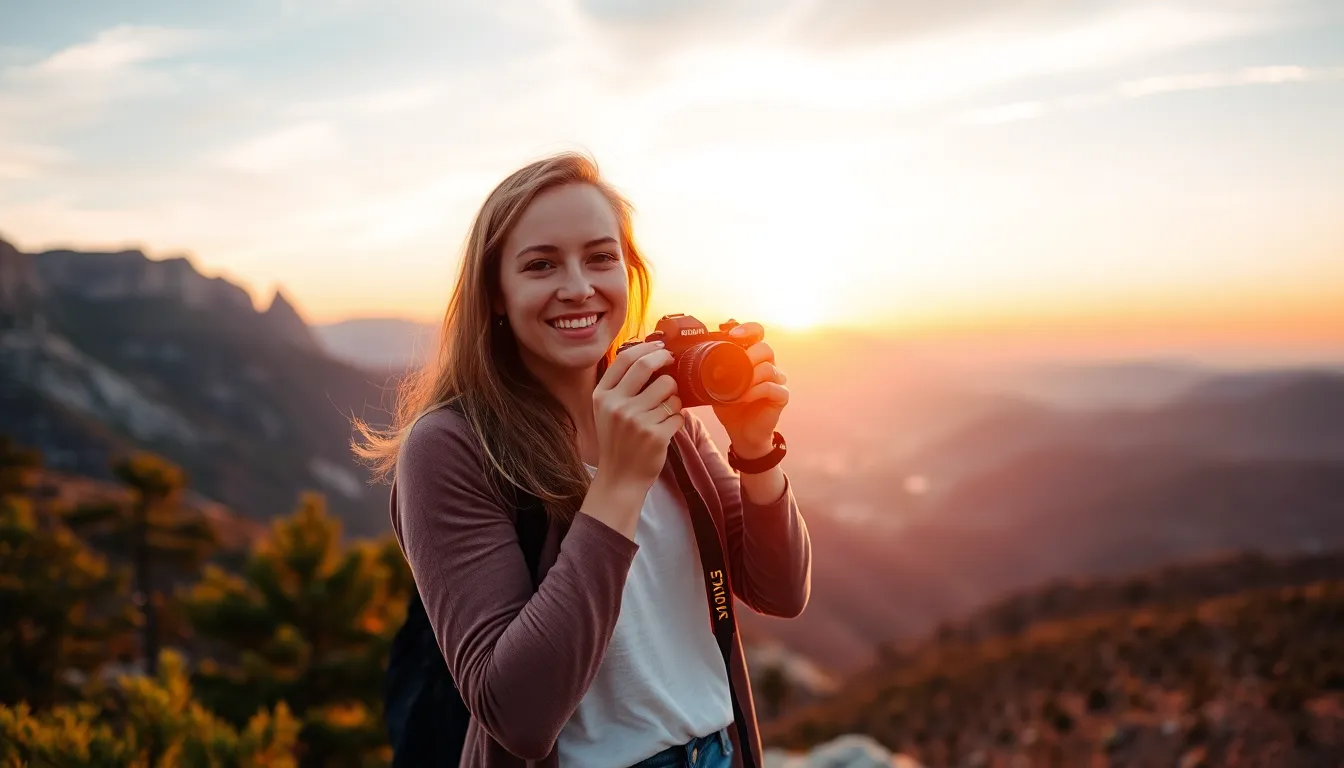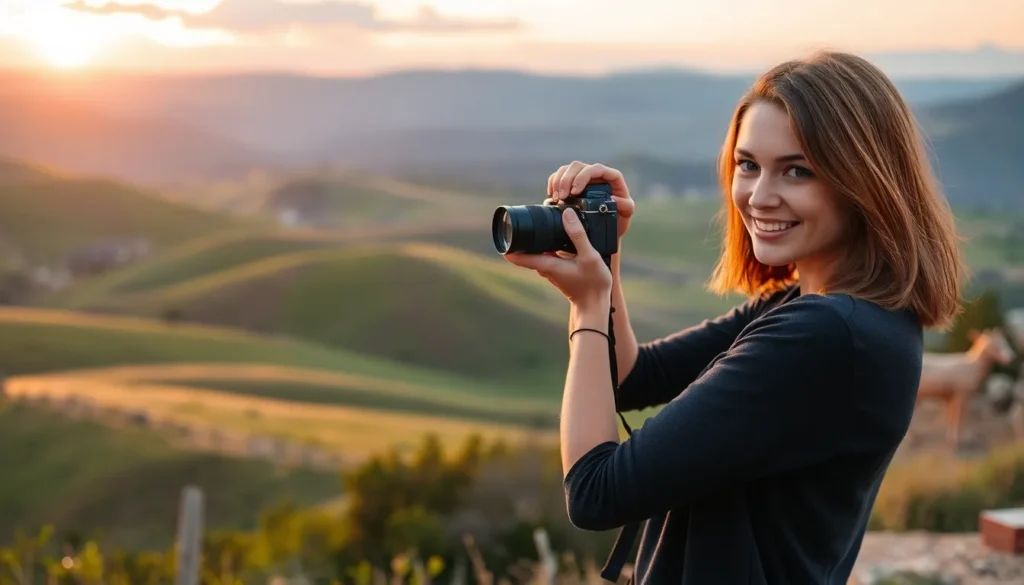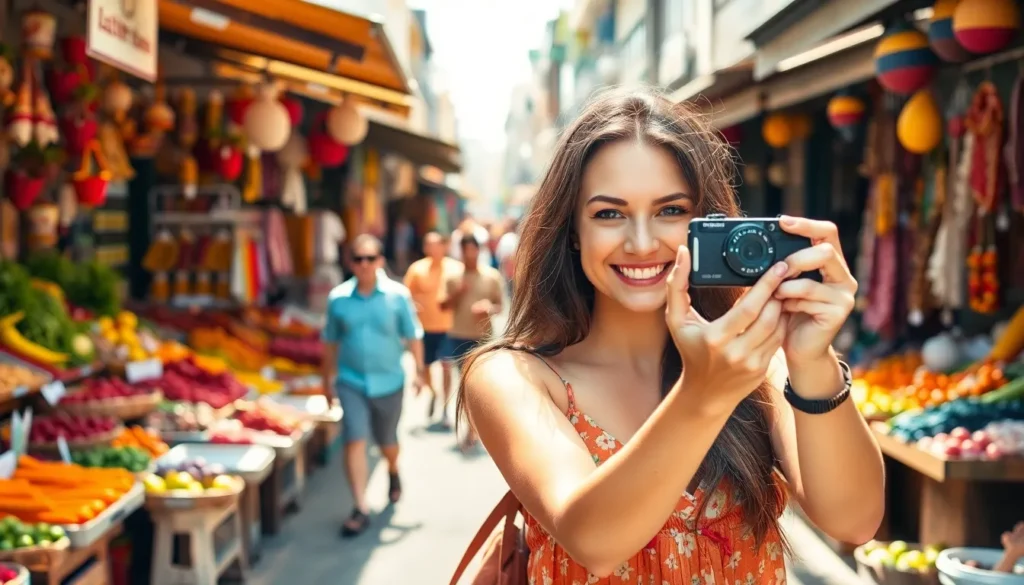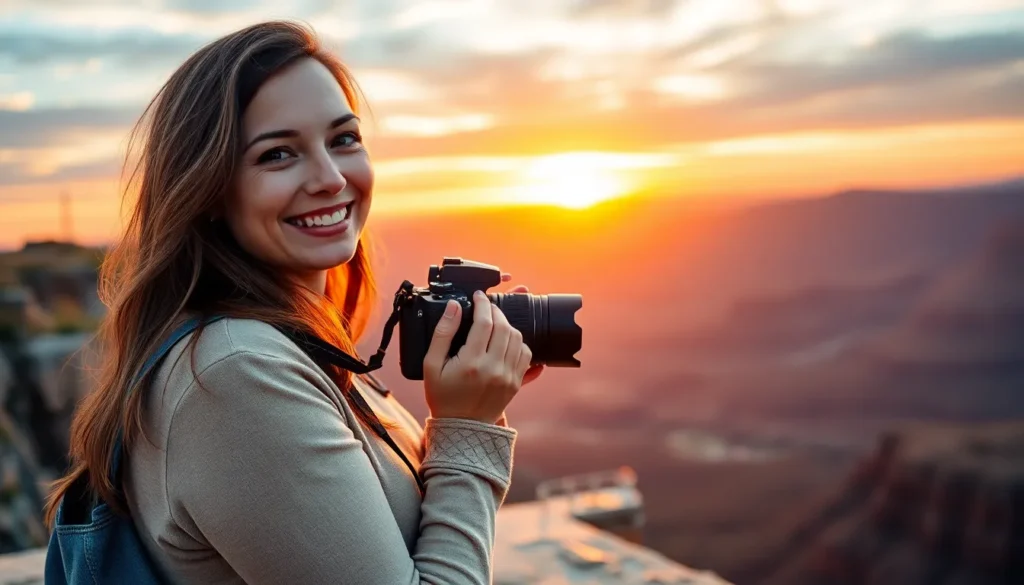Capturing the perfect shot while traveling can feel like a daunting task, especially for beginners. But fear not! With a few simple tips, anyone can go from snapping blurry selfies to creating stunning travel memories that’ll make friends green with envy. Imagine your Instagram feed filled with vibrant landscapes and candid moments that tell a story—sounds dreamy, right?
Travel Photography Tips For Beginners
Travel photography captures the essence of a place, showcasing its landscapes, culture, and emotions through images. Beginners can create compelling visuals by focusing on techniques and principles within this art form.
What Is Travel Photography?
Travel photography is a genre that documents experiences and destinations. It’s not just about beautiful views; it involves portraying authentic stories behind images. Photographers often aim to encapsulate adventures, people, and interactions that represent unique travel moments. Creating evocative images requires a keen eye for detail and a passion for exploration.
Importance of Travel Photography Tips
Travel photography tips enhance a photographer’s ability to produce captivating images. Beginners benefit from understanding composition, lighting, and subject selection. Techniques such as rule of thirds, leading lines, and natural lighting create impactful visuals. Learning to adapt and experiment with different settings fosters creativity. Additionally, these tips help in developing a personal style, making one’s travel photos more appealing for social media sharing and personal memories.
Essential Gear for Beginners

Beginners in travel photography benefit from having the right equipment. Essential gear enhances the ability to capture stunning images.
Camera Options
Digital single-lens reflex (DSLR) cameras offer versatility and high-quality images. Mirrorless cameras provide a compact size while maintaining image quality. Point-and-shoot cameras serve as user-friendly options for those who prefer simplicity. Smartphone cameras feature advanced technology, making them practical for everyday use and capable of high-quality photos. Selecting the right camera depends on individual preferences, budget, and desired features.
Must-Have Accessories
A sturdy tripod ensures stability during long exposures and helps with capturing landscapes. Extra batteries are crucial for long trips, as they prevent missed opportunities when power runs low. Memory cards with high capacity store numerous photos, so choosing brands with reliability and speed is important. A lens cleaning kit maintains clarity and prevents dust from interfering with shots. Filters, such as polarizers, enhance colors and reduce glare, improving image quality. Investing in these accessories supports a more enjoyable photography experience.
Composition Techniques
Composition techniques play a vital role in enhancing travel photography. Beginners can significantly improve their images by applying a few fundamental methods.
Rule of Thirds
Using the rule of thirds can transform any photograph. This technique involves dividing the frame into a 3×3 grid, creating nine equal sections. Placing subjects along these lines or at the intersection points naturally draws the viewer’s eye. For instance, a horizon aligned with the upper or lower third line creates a more balanced scene. Adopting this technique makes photos feel more dynamic and engaging. Beginners may find experimenting with composition exciting, leading to unique shots that capture viewers’ attention.
Leading Lines
Leading lines guide the viewer’s gaze toward the subject. Roads, rivers, and fences provide natural lines that create depth in images. Incorporating these elements enhances a photo’s storytelling aspect. For example, a path leading through a scenic landscape encourages exploration within the frame. Additionally, using leading lines can emphasize distance and scale, making a photo feel more immersive. This technique helps beginners create compelling visuals that invite viewers into their experiences.
Lighting Considerations
Lighting plays a crucial role in travel photography, influencing mood and enhancing image quality. Understanding how to utilize different light conditions can elevate photos to a new level.
Best Times for Photography
Golden hour, occurring shortly after sunrise and before sunset, provides soft, warm lighting that flatters subjects. Midday sun can lead to harsh shadows and overexposed highlights, so it’s best to avoid intense sunlight. Cloudy days serve as an excellent alternative, creating diffused light that minimizes shadows. Prioritizing early mornings or late afternoons allows photographers to capture landscapes adorned with stunning colors.
Using Natural Light
Natural light offers a myriad of possibilities for travel photography. Relying on available light instead of artificial sources leads to more authentic images. Positioning subjects in the right light, such as during golden hour or under shaded areas, reduces harsh contrasts. Experimenting with backlighting can create unique silhouettes, adding drama to photos. Observing how light impacts scenes encourages creativity and can transform ordinary snapshots into remarkable images.
Capturing Local Culture
Capturing the essence of local culture enhances travel photography significantly. This approach involves various techniques to create compelling images.
Photographing People
Photographing people provides a window into a culture. Candid shots reveal genuine emotions and interactions. Engaging with locals before taking photos fosters trust and comfort. Seeking permission shows respect and can lead to more authentic moments. Different settings, such as markets or festivals, often showcase vibrancy. Each portrait captures unique expressions and stories. When focusing on individuals, use different perspectives to enhance the narrative. Light can dramatically impact the mood and tone of portraits. Experimenting with angles creates visually interesting images that resonate.
Documenting Local Customs
Documenting local customs enriches a photographer’s portfolio. Customs may include traditional dances, culinary practices, or festivals. Capturing rituals in action gives viewers insight into daily life. Anticipating pivotal moments often leads to powerful images. Observing surroundings helps identify unique aspects worth photographing. Incorporating detailed shots of local crafts showcases artistic expressions. Photographers can use storytelling techniques to convey significance. Several images together can narrate a story about a community. Each detail captured contributes to a deeper understanding of the culture.
Editing Your Travel Photos
Editing travel photos is essential for bringing out their full potential. Beginners can significantly enhance their images with the right tools and techniques.
Basic Editing Tools
Popular editing software options include Adobe Lightroom, Photoshop, and mobile apps like Snapseed. Each platform offers various features to cater to different editing needs. Users can adjust exposure, contrast, and saturation to create the desired mood in their images. Cropping tools are available to refine composition, ensuring subjects remain the focus of the shot. Many programs include presets which simplify the editing process by applying predefined adjustments. Beginners can start with basic adjustments and gradually explore more advanced features as their skills develop.
Enhancing Your Images
Fine-tuning principles play a crucial role in the enhancement process. Sharpening the image enhances details, making landscapes and subjects stand out. Noise reduction tools help improve image quality, particularly in low-light conditions. Color correction ensures that images better reflect the true environment, resulting in more vibrant visuals. Adding effects such as vignetting can direct attention to the central subject, creating a focal point. Using filters can further elevate images, but moderation is key to maintaining authenticity. Consistently applying these techniques can transform ordinary travel photos into captivating works of art.
Conclusion
Travel photography is an enriching journey that allows beginners to capture and share their unique experiences. By applying the tips outlined in this article, anyone can elevate their photography skills and create stunning visuals that resonate with viewers. Embracing composition techniques and understanding the nuances of lighting can transform ordinary moments into extraordinary memories.
Investing in the right gear and accessories sets the foundation for success while engaging with local culture adds depth to each image. With practice and creativity, beginners can develop a personal style that reflects their adventures. Ultimately, travel photography is about storytelling and connection, making it a rewarding pursuit for anyone looking to document their travels.



